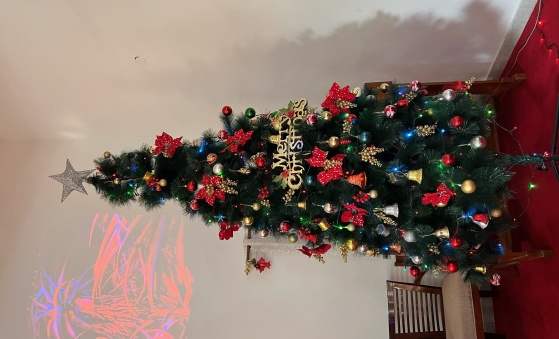Port Blair – Killer tidal waves triggered by an undersea earthquake near the Indonesian island of Sumatra have washed away nearly 100 chapels and have damaged several church buildings in the archipelago of Andaman and Nicobar served by Port Blair diocese.
However, no loss of life has been reported among Catholic priests or nuns working in the Andaman and Nicobar Islands territory, according to Bishop Aleixo das Neves Dias of Port Blair.
The territory, whose capital is Port Blair, and Tamil Nadu state are the two regions in India hit hardest by the tidal waves.
The destruction of church properties is "devastating," Pilar Bishop Dias said from Port Blair.
A December 31 letter sent by the Catholic prelate to the Church people in the mainland said that his Protestant counterpart was marooned in a forest area on the southern island of Car Nicobar.
The Nicobari tribe, most of whose members belong to the Church of North India (CNI), inhabits the island. The waves seemed to have washed away the CNI bishop's house and cathedral on that island, Bishop Dias' letter said.
The prelate quoted "unconfirmed sources" as saying the causalities on Car Nicobar itself could be as high as 15,000. However, the official count for the territory stood at 5,000 on Decembeer 31, with local media saying 7,000.
In his letter, Bishop Dias said that the island of Car Nicobar was hardest–hit, an island inhabited by the tribal Nicobaris, most of whom are Anglicans. “Their Cathedral in Car Nicobar,” the text reads, “and the residence of their bishop are said to have been completely washed away.”
Bishop Dias “thanks God” that Church staff—fathers, sisters and our catechists—are well. “But the churches, presbyteries, convents, schools have been totally destroyed.”
Why all this? The Bishop asks. “Thanks to the Lord, in the last 20 years, since I became the first Bishop of this newly created diocese, much development had taken place here, particularly by way of creation of new parishes, convents, schools, hostels, etc. Now with this destruction I am asking myself what message the Lord is giving me and us. I bow before Him and say: Fiat Voluntas Tua.”
“We are doing our best,” the letter goes on to say, “to help in the relief work. [. . .] Thousands of people have been evacuated from the Nicobars by planes and ships and are being brought to Port Blair.”
Bishop Dias said many people swam to safety, climbed trees or ran into the forest to save their lives. "Their stories make one weep," the prelate added. "Unfortunately," the Catholic prelate lamented, "the Andaman and Nicobar Islands do not seem to find a place in international news."
The centrally administered union territory comprises 576 islands that British colonists originally used as a penal settlement for political adversaries and criminals. The archipelago has 13 Catholic parishes, 11 in the northern Andaman island group and two in the southern Nicobar group. Each parish has a church and at least 24 chapels, some of them thatched–roof huts.
The Catholic Church also has 11 convents, three primary and two high schools, two hostels and an apostolic school, besides a home economics school for girls. Most islands in the Nicobar group are more than 400 kilometers from Port Blair. It takes about three days to reach them by ship, Bishop Dias said.
As information trickles in from the islands, diocesan officials are slowly assessing the damage. They are close to the epicenter of the undersea earthquake that triggered the killer waves. According to Bishop Dias the earthquakes affected the northern region and tsunamis the southern.
Bishop Dias described the earthquake as "very strong" and felt throughout the territory. He said the region used to experience "regular" tremors, but never anything like "this earthquake."
The quake that struck the island at 6:35 a.m. seemed "endless, having lasted for about three to four minutes," the prelate said.
He said 24 church buildings in the Andaman region developed cracks. "It's a massive loss to our property. We do not know if we can use these buildings again." In most of these places, priest's residences also were destroyed. "If you calculate the number of chapels washed out, it would reach a hundred," Bishop Dias added.
The farthest parish was in Great Nicobar, where a church, a priest's residence, convent and a school were destroyed. "It was a total washout," the Bishop said.
Despite its losses, the Church is helping the administration to manage four relief camps in the capital, said Bishop Dias. "We have been distributing clothes, towels, bed sheets and tarpaulin material, which we have managed to collect from students of our schools and their parents," he added.
Each camp has about 900 survivors, mostly from the islands to the south.
According to Bishop Dias, the Church workers experienced problems from civil authorities over rehabilitation plans. The administration officials "come to make a name for themselves," he said. “They are seen at the camp at the last moment, just before the governor arrives on inspection, and then begin quarrelling with our workers," the prelate explained, adding that the Church people are not interested in gaining recognition for their efforts.
A Catholic hospital in Port Blair managed by Spanish nuns of the Sisters of Charity of St. Anne has been helping the devastated survivors, he added.
The bishop belongs to the Missionary Society of St. Francis Xavier, a congregation started in the western Indian state of Goa, whose capital is Panaji. It is also popularly known as the Pilar Society and has 14 priests working in the territory. The Pilar priests were the first congregation to work in the eastern islands.
The diocese now has 14 diocesan, two Capuchin, three Salesian and four Jesuit priests, besides 86 nuns from 14 congregations.
The territory became a diocese in 1985 with Bishop Dias as its first bishop.




